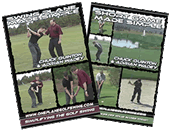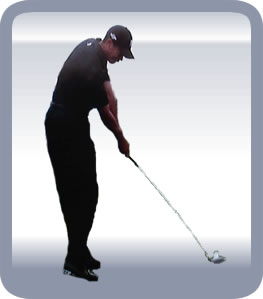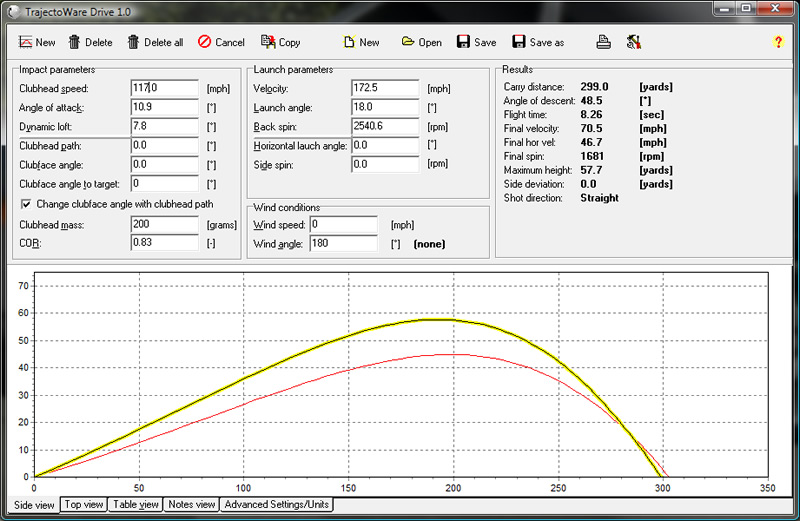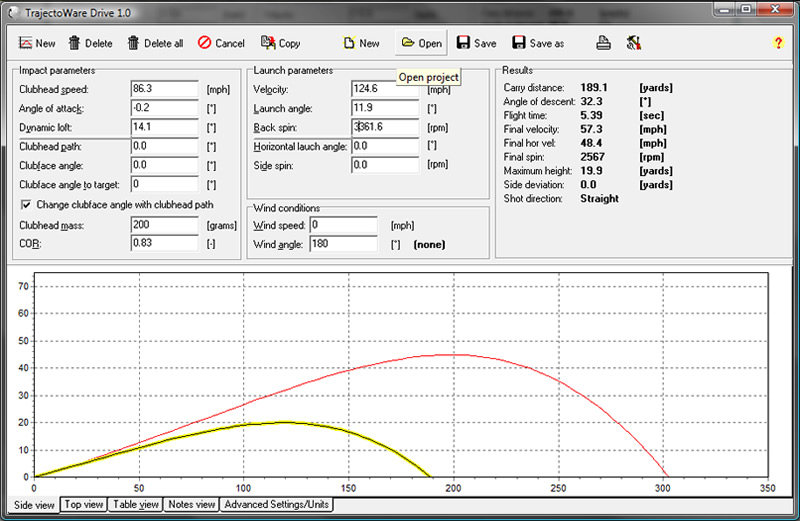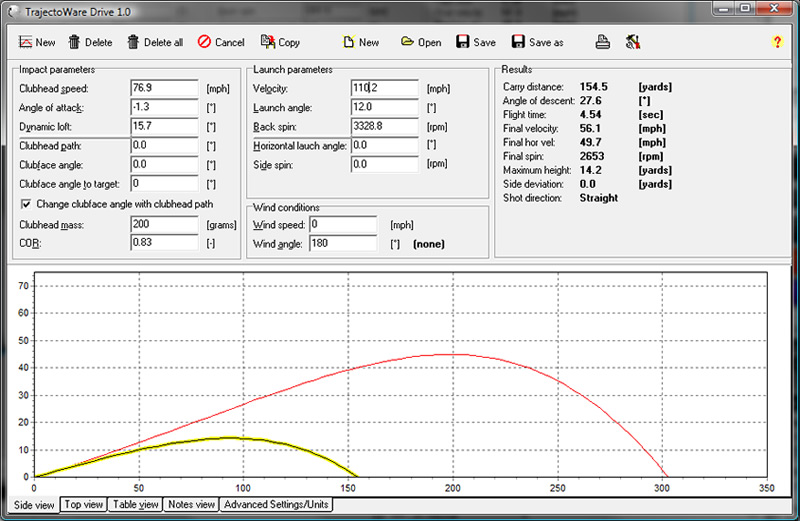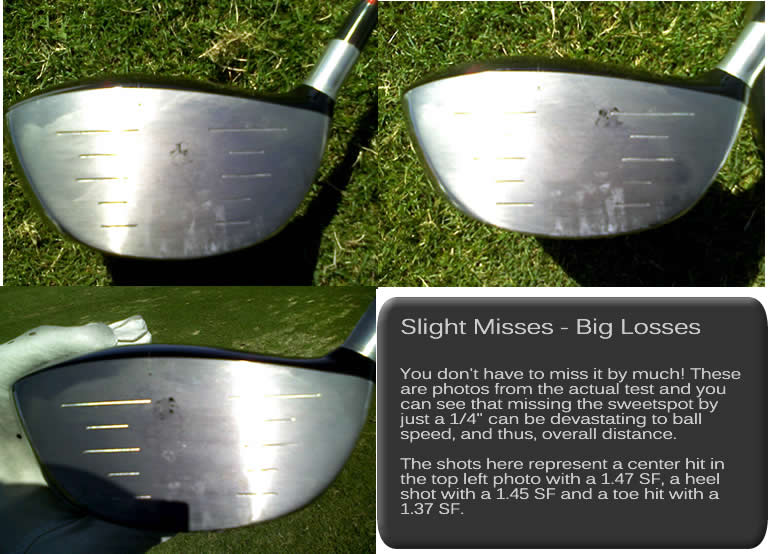by Chuck Quinton
"Bomb Your Driver Series - Ball Contact and Ball Speed with the Modern Driver" |
Rotary Swing Golf |
How to get more distance from your driver
Now, this is of course, 300 yards of carry we're talking about, not including roll as roll varies from course to course and location to location. But, what you can see from this is that 300 yards of carry takes 117 mph of clubhead speed with the ball struck perfectly in the center of the face, launched very high and with very little spin. For 99% of the golfing public, these numbers are simply not achievable. The 18 degree launch angle with only 2,500 rpm's of spin requires a very positive angle of attack and a low loft, low spin driver which are generally NOT what are sold at retail because most people don't swing at 117 mph. Unfortunately for your buddy, 117 mph of clubhead is around the threshold for a 300 yard carried drive. Granted, he might have only hit carried it 270 and got 30 yards of roll, but again, every course differs when it comes to roll. Now let's take a look at what is more likely. Most amateur's average clubhead speed is around 86 mph, so let's punch those numbers in and see what we get:
Again, we're only talking carry here, but you can see that at the average amateur clubhead speed of around 86 mph launched with typical spin and launch angle numbers, the carry distance is only 189 yards, a little pitching wedge short of our ideal target of 300 yards! Now this ball, which is a very typical shot for an average golfer is going to roll on most fairways because of it's very shallow Angle of Descent - a very important number you will learn a lot more about during this series. So, our Average Joe is probably going to hit this about 210-220 yards on average ASSUMING he hits it perfectly! Now, let's take it down and show what happens when he mishits it just a fraction:
Now we've taken a slight mishit where the golfer has lost about 10% of his ball speed. This would equate to missing the sweet spot on a typical modern driver by about 1/2" according to our testing. Joe has now lost about 35 yards of carry! Not good as this drive probably only went about 175 yards. On a slight mishit such as this, you can expect a 10% loss in ball speed and ball speed is the key determinant to your potential maximum driving distance. On a more severe mishit, say low in the face and toward the toe, expect a 20% or more loss of ball speed! Joe can hit it 30-40 yards further by catching the center of the club face everytime and will find that he will hit it further with less clubhead speed everytime.. So, how do we know where we are hitting it on the face and find the sweet spot on the club? Simple. A dry erase marker. Yep, that's right, that's all you need to add 30+ yards to your drives on average - TODAY! The $1 you spend on your dry erase marker will show you everything you need to know about where you are hitting it on the face and using this in conjunction with your Swing Speed Radar will let you know where you need to hit it on the face of your particular driver because every club is different as you will see in the video. In this video, I go into detail about ball speed differences for different contact areas on the face and demonstrate how to effectively use the dry erase marker to gain more distance.
Below is some Smash Factor data that was taken to demonstrate the loss of ball speed on mishits from the video:
There are two very important things to be gleaned from this data. First, in order to get enough center hit shots for the test to have reliable data, I slowed my clubhead speed down by 3-4 mph. In doing so, I was able to get my ball speed up to the same 170 mph that I had when hitting shots off the heel with 3 mph more clubhead speed. Not only were my ball speed numbers the same, but the carry distance numbers were longer with less clubhead speed because the ball had less spin and was hit more at the target. In the end, the tortoise wins the race! Hit it solidly in the center of the face and out drive your buddies by a mile with less clubhead speed!
Below are three photos from the actual test that show just how little you can miss the sweetspot by and lose tons of ball speed:
By using the tools and tests in this video, you can easily pick up 20+ yards on your drives, and do it today! |
||||||||||||||||||||||||||||||||
|
|
|
|
||||||||||||||||||||||||||||||
|

